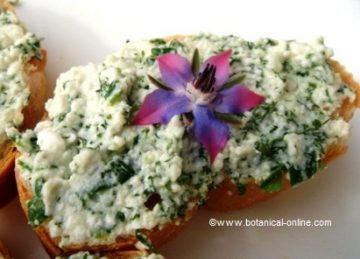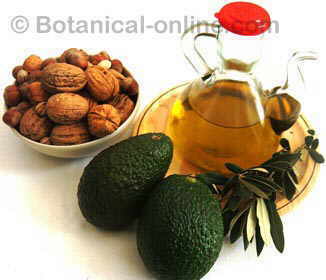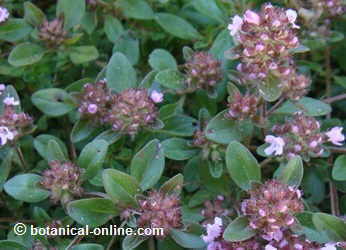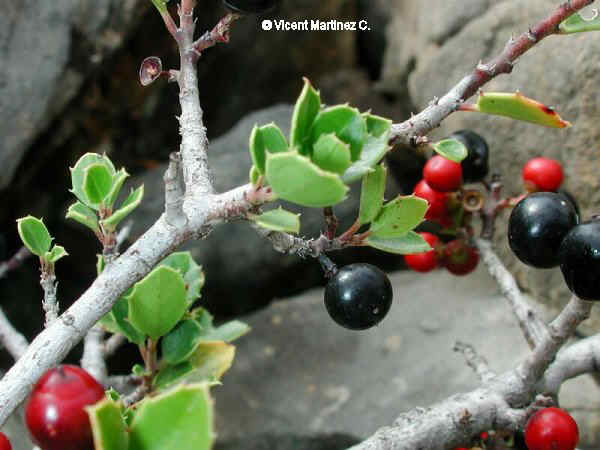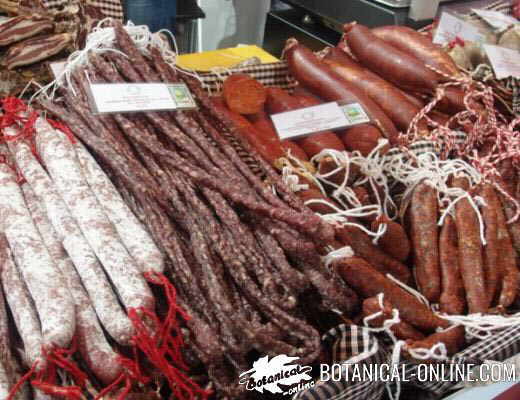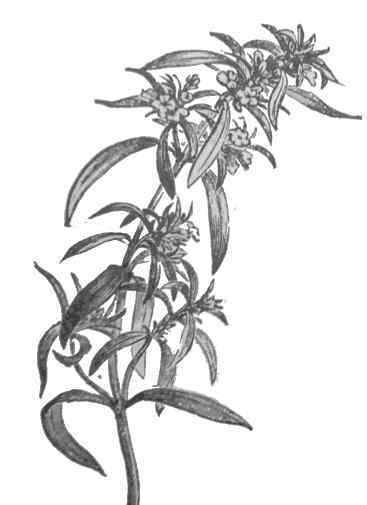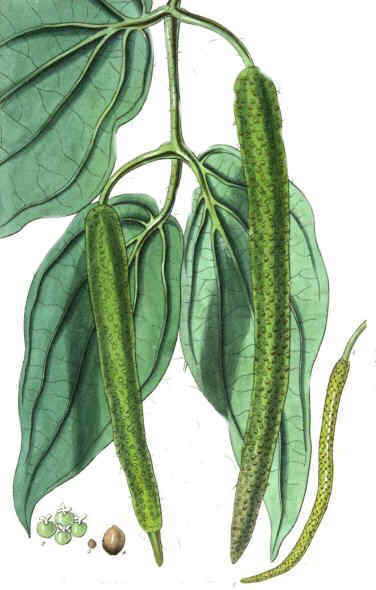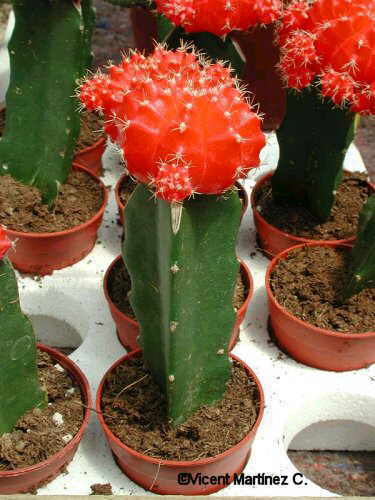Contents
- 1 Examples of wild plants with edible leaves
- 1.1 Why to use wild plants in the kitchen?
- 1.2 Considerations before using wild plants in the kitchen
- 1.3 Ingredients for a wild salad
- 1.4 Salad burnet leaves in salads
- 1.5 Fennel: leaves, flowers and fruits
- 1.6 Fennel flowers in the salad
- 1.7 Precautions with fennel
- 1.8 Leaves of purslane in the kitchen
- 1.9 Arugula, a lettuce of the cabbage family
- 1.10 Yarrow leaves, edible
- 1.11 Violet leaves in the kitchen
- 1.12 What are the mucilages of violet?
Examples of wild plants with edible leaves
Why to use wild plants in the kitchen?
Wild herbs are a privileged ingredient, since many species can not be found daily in hypermarkets. These wild ingredients allow to broaden the culinary horizon, often limited to just over 6 leafy vegetables (spinach, lettuce, chard, …).
In the following article we propose some original ingredients to provide the salads with an extra touch of flavor and nutrition.
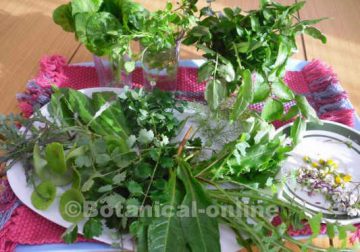
An example of some wild leaves for salad: Navelwort (Umbilicus rupestris), watercress (Nasturtium officinale), salad burnet (Sanguisorba minor ), slender sowthistle (Sonchus tenerrimus), common brighteyes (Reichardia picroides), common chickweed (Stellaria media), wild lettuce (Lactuca virosa), sorrel (Rumex acetosa), violet (Viola odorata), and to the right, a few flowers of white rocket (Diplotaxis erucoides)
Considerations before using wild plants in the kitchen
For this type of cuisine to be sustainable and healthy, the following basic rules of responsible consumption should be respected:
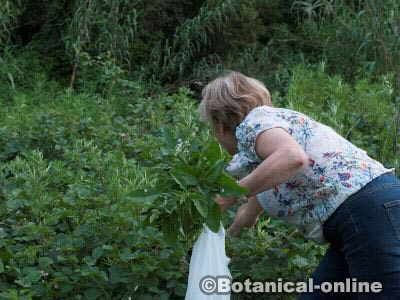
Collecting nettles for a nettles soup.
- It is recommended to grow the plants yourself for consumption, in a garden or orchard. In this way poisonings are avoided. In case of collecting in full nature, follow the recommendations to consume wild plants:
- You can not eat any leaf, but only those whose edibility is known. Sometimes poisonous plants similar to edible species can be collected.
- Knowing each plant implies knowing what is the optimum time for harvesting and how best to cook them. For example, many leaves are collected in spring, when they are tender, since after this time they are too woody.
- We must make a responsible consumption, so as not to alter the ecosystem, and conserving the health of the plant.
Ingredients for a wild salad
One of the most delicious and peculiar leaves that we can add in a wild salad, in our opinion, are the curious, delicious and refreshing leaves of the navelwort (Umbilicus rupestris). Do you know what plant it is?
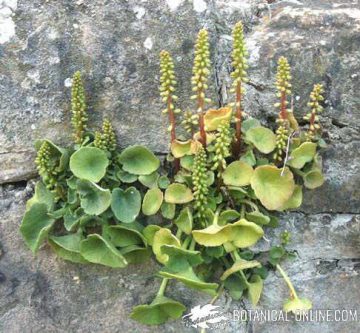
Navelwort is a plant that we can find growing between the cracks in the walls.
This plant, which grows abundantly between the stone walls and roofs, has fleshy leaves of characteristically rounded shape, which provide eye-catching, as well as excellent flavor and color.
Salad burnet leaves in salads
Salad burnet leaves (Sanguisorba minor) are another option to flavor the salad. In this case they are used in small quantities, given their tiny size. It is tiny leaves of serrated margins, with a flavor reminiscent of cucumber and an intense dark green color. They are full of color, flavor and antioxidant properties contributed by chlorophyll.
Fennel: leaves, flowers and fruits
Fennel is a plant of the Umbelliferae family, a relative of celery and parsley. It is characterized by its leaves with filiform leaflets and their yellow flowers, which grow in an umbel.
The tender leaves of fennel are cut very fine and are added to salads, or can be finely chopped and mixed with cheese to prepare a homemade fine herbs cheese. Typically, it is used for fish broths and seafood recipes. (In a similar way we can also use the leaves of yarrow).
Fennel flowers in the salad
The flowers of the fennel are added to the salads, or a dressing is prepared with them. They have an intense aniseed flavor. The same use receives the fruits of fennel, but they are used to a lesser extent, because they have a stronger flavor.
Precautions with fennel
The high consumption of fennel fruits has produced nausea and vomiting due to its high concentration of essential oils (anethole and estragole). Pregnant women should not consume fennel fruits because of their content in apiol, an abortive component. In some cases, it is used as a remedy for babies’ colic
Fennel also contains phototoxic oils (furocoumarins), that is, it is not recommended to take sun baths after consuming this plant.
* More information: Recipes with fennel
Leaves of purslane in the kitchen
Purslane is a creeping plant with succulent leaves that makes some yellow flowers in summer.
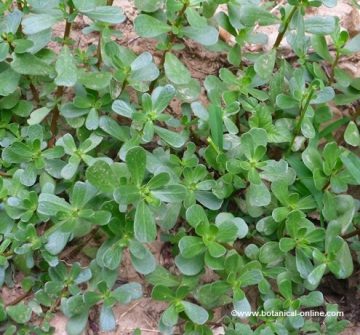
Purslane leaves
Traditionally, purslane has been consumed as a food and medicinal plant. Its virtues are due to its content in mucilage, which provides certain properties to this vegetable. The purslane leaves are cooked by adding them to the salads.
* More information: Edible properties of purslane
Arugula, a lettuce of the cabbage family
The arugula or rocket leaves (Eruca vesicaria) can be found in some supermarkets, since little by little it is introduced in mixtures of leaves of salads called “gourmet” or similar. It is a plant of the family of cabbages (cruciferous).
It can be eaten in salads, or cooked as a vegetable, in tortillas, soups, creams, fillings, etc. In Italian restaurants, some pizzas are served with a handful of fresh rocket leaves on top.
The arugula has a refreshing and slightly spicy taste. This is due to the presence of some components, the glucosinolates, which have anti-cancer properties.
* More information: Recipes with arugula
Yarrow leaves, edible
Yarrow is a medicinal plant of the family of Compositae plants, such as chamomiles. It is found in mountainous areas with some humidity.
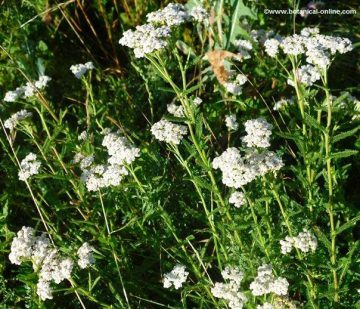
Photo of yarrow
Its leaves are edible, have a strong flavor reminiscent of chamomile. They should be used in a small amount, which is enough to add flavor. Mixed in the salads, they provide an intense aroma.
They can also be crushed and mixed with cheese to make fine spreadable cheese, or mixed with butter (herb butter).
Violet leaves in the kitchen
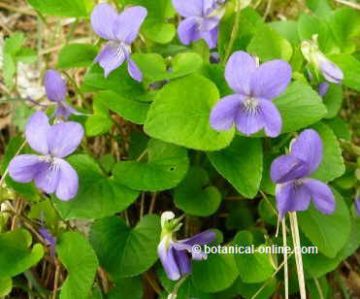
Photo of common violet (Viola odorata) with leaves and flowers
Violet flowers and leaves (Viola spp), are edible . In particular, violet leaves are very rich in mucilage.
With this plant it is very easy to show what is the action of the mucilage: it is enough to chew a single leaf of violet for 1 minute, and in that time, a kind of gel forms in the mouth, due to the thickening action of the mucilage on the saliva.
What are the mucilages of violet?
Mucilages are a type of emollient fiber (soluble fiber), the gel that forms is used to treat inflammations of the digestive tract such as gastritis.
Mixing a few violet leaves in salads, or a soup, will increase the nutritional properties of the recipe with the benefits of these components …
![]() More information on edible wild plants.
More information on edible wild plants.
12 November, 2025

